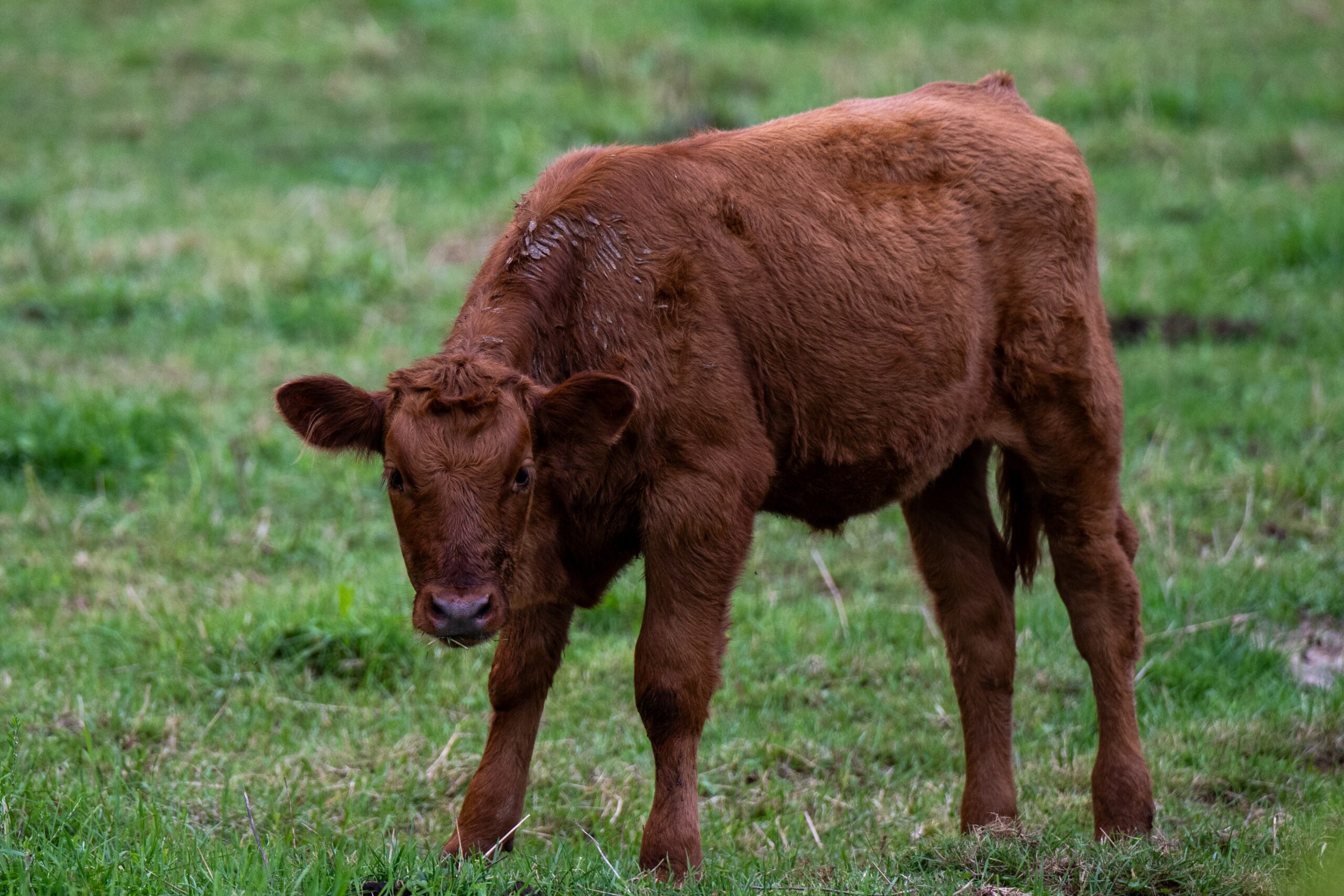The Temple Institute announced on Tuesday that the remaining red heifers that had been brought from Texas by Boneh Israel to perform the Biblically mandated purification ceremony are not suited for the ceremony.
“The three weeks of intensified focus and adoption of customs of mourning over the destruction of the two Holy Temples in Jerusalem have ended,” the announcement read. “But our recap of all the work the Temple Institute is involved with, the one aim of rebuilding the Holy Temple and renewing the Divine service is far from exhausted.”
The Temple Institute described its more than two decades of efforts to find a suitable red heifer. A red heifer is an entirely red female cow with no more than one non-red hair on its entire body. In the language of the Bible, red is not exclusively what we know today as red. It also includes brown and other similar shades of red. This excludes black. All of the hairs on its body must be the same color. The animal must also be two years and one month old. There can be no blemish, no holes in the ear, and it may never have carried a burden.
In September 2022, Boneh Israel, a cooperative effort of Jews and Christians together, found five suitable candidates in Texas and transported them to Israel.
“We have forged deep connections with cattle growers in the United States, both professionally and personally,” the statement by the Temple Institute continued. “We have worked with cattle growers in Israel. We have raised red heifer candidates here in Israel and flown over red heifer candidates from Texas. The halachot concerning the eligibility of a potential red heifer are very strict, and unfortunately, all our efforts so far have been frustrated by the appearance of more than one non-red hair on all our potential candidates. Nevertheless, our efforts continue.”
Just posted on The Temple Institute’s Facebook page…🤔
— MissWeebeastie ❤️🙏✝️ (@Weebeastie6) August 5, 2025
3 WEEK DIARY: WORK OF THE TEMPLE INSTITUTE: THE RED HEIFER
The three weeks of intensified focus and adoption of customs of mourning over the destruction of the two Holy Temples in Jerusalem have ended. But our recap of… pic.twitter.com/WOoXQPIkxk
“Attaining a suitable red heifer, however, is only one aspect of the work of achieving the longed-for purifying ashes. Once a viable red heifer has been achieved, it needs to be slaughtered and burned into ashes. Simply creating a fire that will burn at a temperature capable of converting the heifer into ashes is a task that has required much research and experimentation.
“Kohanim who are free of the impurity of tamei met (proximity to a dead body) must be located, for only kohanim enjoying such a status can be involved in creating the ashes. This requires kohanim who were home-birthed and have never stepped inside a hospital or cemetery, where the impurity of tamei met is a given. The Institute has successfully located and brought on board eligible kohanim.
“Pure waters from the Shiloach spring located at the foot of the City of David must be collected, and cedar wood, hyssop, and wool dyed red with the tola’at shani insect must also be acquired and added to the ashes. Fortunately, all these elements are readily attainable.
“The actual burning of the heifer must take place on the Mount of Olives at a vantage point from which the kohen performing the ceremony can see into the great entrance of the Temple Sanctuary, (or, at least, where it stood).
“All throughout the Institute’s continuing efforts, tremendous research has formed the basis for every step forward we have taken. Rabbi Azariah Ariel of the Temple Institute has devoted years of his life researching and overseeing all these aspects.”
The announcement described a practice burning that was carried out recently using one of the Texas red heifers that had been deemed unsuitable.

“The experience better prepares us for the ultimate performance of the ceremony with a kosher heifer,” the Temple Institute stated. “We all know that acquiring the purifying ashes of the red heifer will be a major and indisputable step forward toward building the Mikdash and renewing the offerings. For this very reason, there are many opposed to our efforts among the enemies of Israel, and to our regret, even within the people of Israel. For this reason, we keep a tight lid on our efforts and generally do not advertise our successes.”
Opposition to the red heifer and the Jewish Temple in Jerusalem is extreme. Abu Obeida, the military spokesman for the Izz ad-Din Al-Qassam Brigades, the military wing of the Palestinian Hamas terrorist organization, made a televised appearance on the 100th day of the Israeli war on Gaza. He stated that the motive for the invasion and massacre of Israelis on October 7, 2023, was the arrival of the red heifers in Israel. “The criminal Zionists are practically advancing towards destroying [the Al Aqsa Mosque] and establishing their temple,” Abu Obeida said, justifying the attack Hamas dubbed the Al Aqsa Flood.
“Due to our reluctance to advertise and also due to our lack of success in acquiring a viable red heifer candidate despite all our efforts, some of our supporters have expressed their frustration. After all, there are many red-haired breeds of cattle in the world and, no doubt, many thousands of potential red heifers born each year. No doubt, if the Temple Institute enjoyed a much larger budget, we could expand our efforts and potentially acquire a red heifer sooner, rather than later. But just as the chok – the statute – of the red heifer is considered to be a great test of our faith in and fidelity to HaShem’s word, we must also maintain the faith and trust that a suitable red heifer will be found when G-d sees fit. Meanwhile, our efforts continue, full steam ahead.”




